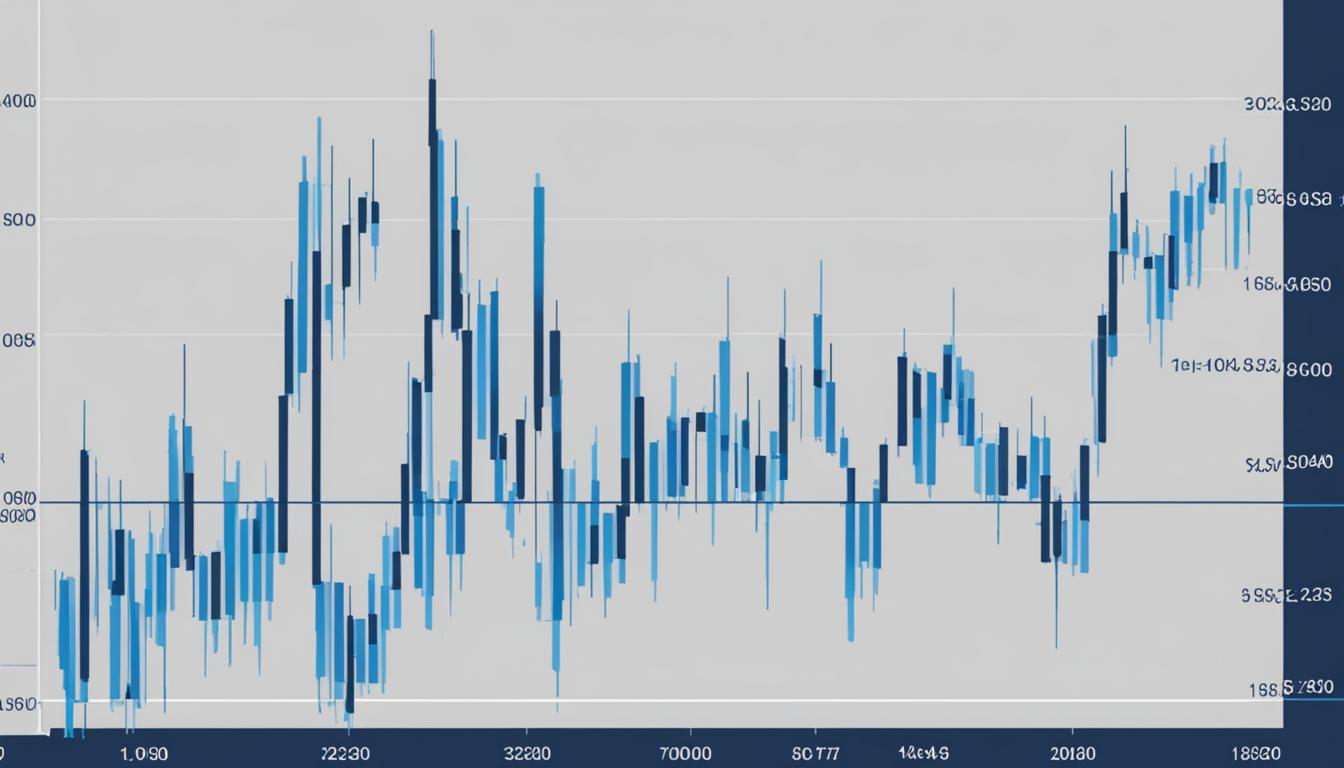How to Stay PDT Compliant and Succeed in Day Trading

Introduction
The Pattern Day Trading (PDT) rule is a regulatory guideline established by the Financial Industry Regulatory Authority (FINRA). It specifically targets traders who execute four or more day trades within five business days in a margin account. This rule plays a critical role in day trading, ensuring that traders maintain a minimum equity of $25,000 in their accounts to mitigate risks associated with frequent trading activities.
Day trading can be both lucrative and risky. The PDT rule emphasizes the need for sufficient capital, thus protecting both the trader and brokerage firms from potential financial pitfalls. Understanding how to stay compliant with the PDT rule while maximizing your success as a day trader is essential.
While navigating the complexities of day trading, it’s important to consider various factors that can significantly impact your profitability:
- Hidden power of open interest in option contracts: Understanding this concept unlocks insights into market trends and investor sentiment for smarter investment decisions.
- Key concepts of Option Moneyness: Grasping these concepts can greatly enhance your ability to implement advanced strategies designed to maximize profits in the US market.
- FX Spot vs FX Options Trading: Understanding the nuances of these two approaches to foreign exchange markets, particularly FX trading, is essential for making informed decisions.
Now let’s dive into the details of the PDT rule, its implications, and valuable strategies to help you succeed in day trading.
Understanding the PDT Rule
The Pattern Day Trading (PDT) rule is a crucial regulation that every aspiring day trader must understand. This rule states that if you make four or more day trades within five business days in a margin account, you are classified as a Pattern Day Trader. This classification comes with specific requirements and restrictions designed to reduce the high risks associated with day trading.
Purpose of the PDT Rule
The primary purpose of the PDT rule is to protect traders from excessive risk and potential financial loss. By enforcing a minimum equity requirement, it ensures that only those with enough capital can engage in frequent day trading activities. This regulation also aims to prevent inexperienced traders from taking on significant borrowing, which can lead to large losses.
FINRA Regulations
The Financial Industry Regulatory Authority (FINRA) oversees the implementation of the PDT rule. Under FINRA regulations, a trader designated as a Pattern Day Trader must maintain a minimum equity of $25,000 in their margin account at all times. If the account falls below this threshold, trading restrictions are applied until the balance is restored.
Criteria for Pattern Day Trader Designation
Brokers follow specific criteria to designate an individual as a Pattern Day Trader:
- Number of Trades: Making four or more day trades within five business days.
- Margin Account: Trading must occur within a margin account.
- Minimum Equity Requirement: Maintaining an account balance of at least $25,000.
Understanding these criteria helps you stay compliant and avoid any potential trading restrictions imposed by your broker. For instance, gaining insights into options exchanges can provide deeper knowledge about American financial markets, while exploring neutral options strategies can offer valuable techniques to enhance your trading approach in any market condition.
The Risks and Benefits of Day Trading
Advantages of Day Trading:
- Liquidity and Flexibility: Day trading offers high liquidity, allowing you to enter and exit positions quickly. This enables you to capitalize on short-term price movements.
- Potential for High Returns: With the right strategy and timely trades, day trading can yield significant profits within a short time frame.
- Control Over Trades: You have direct control over your trades, making it easier to implement your strategies without relying on long-term market trends.
Disadvantages of Day Trading:
- High Risk: Day trading involves substantial market risk. Rapid price fluctuations can lead to significant losses if trades are not executed properly.
- Time-Consuming: Successful day trading requires constant monitoring of market conditions, making it a full-time commitment.
- Emotional Stress: The fast-paced nature of day trading can be stressful, leading to emotional decision-making which can negatively impact your performance.
Market Risks in Day Trading:
Day traders face several types of market risks, including:
- Volatility Risk: Sudden price changes can result in unexpected losses. Utilizing day trading risk management techniques such as stop-loss orders can help mitigate this risk.
- Liquidity Risk: Inadequate liquidity can make it difficult to close positions at favorable prices.
Effective management of these risks is crucial. Implementing a well-defined day trading strategy that includes clear entry and exit points can help manage market risks effectively.
Role of a Well-defined Trading Strategy:
A robust trading strategy is essential for mitigating risks and increasing profitability. Key components include:
- Risk Management Techniques: Using tools like stop-loss orders and position sizing to limit potential losses.
- Technical Analysis: Leveraging charts and indicators to make informed decisions.
- Consistent Review: Regularly evaluating and adjusting your strategy based on performance metrics.
By focusing on these elements, you can navigate the complexities of day trading while staying compliant with regulatory requirements.
Maintaining Compliance with PDT Rules
Staying compliant with the PDT rule requires vigilance and strategic planning. Here are some practical tips to help you avoid violations:
1. Monitor Your Trades
Keep a detailed log of all your trades. This helps you track the number of day trades and stay within the allowed limit.
2. Use Alerts
Set up alerts with your brokerage platform to notify you when you’re approaching the day trading limit.
3. Adjust Trading Frequency
Plan your trades to avoid executing more than three-day trades within five business days.
To actively trade while staying within the PDT rule’s limitations, consider these strategies:
1. Cash Accounts
Use a cash account instead of a margin account. Cash accounts aren’t subject to the PDT rule, although they come with their own limitations such as settlement periods.
2. Swing Trading
Focus on swing trading, which involves holding positions for several days. This strategy reduces the frequency of day trades.
3. Options Trading
Explore options trading as an alternative. Resources like How Options Trading Changed In The Last Decades provide valuable insights into evolving strategies.
When working within the constraints of the PDT rule, alternative trading approaches can be beneficial:
1. Partial Positions
Consider opening partial positions instead of full ones. This allows you to scale in and out without completing a full trade, thus reducing your day trade count.
2. Trade Larger Time Frames
Analyze longer time frames (daily or weekly charts) to identify trends and reduce the need for frequent day trades.
3. Leveraging Different Accounts
Open multiple accounts with different brokers. This can help distribute your trades and avoid hitting the day trading threshold.
Being aware of these strategies and approaches ensures that you not only remain compliant but also continue to thrive in your day trading endeavors.
Additionally, if you want to enhance your options trading skills, you may want to explore resources like Bearish Flags: How To Trade Them With Options, which unlock strategies for profitable trades using the bearish flags chart pattern. You can also delve into the financial world with a comprehensive guide on What Is A Call Option? This guide will help you understand its working, benefits, and how to use it effectively in your trading strategy.
Consequences of Breaking the PDT Rule
Violating the Pattern Day Trading (PDT) rule can lead to several repercussions that may hinder your trading activities. Understanding these potential outcomes is crucial for maintaining compliance and ensuring uninterrupted trading.
Account Restrictions
When you violate the PDT rule, brokers typically impose account restrictions. These restrictions may include:
- Limited Trading Capabilities: You might be restricted from executing additional day trades until your account equity meets the required threshold.
- Cash-Only Account: Your margin account could be converted to a cash-only account, severely limiting your ability to leverage trades.
Increased Margin Requirements
Failing to comply with the PDT rule often results in increased margin requirements. Brokers may raise the minimum equity you need to maintain, putting more financial pressure on you.
Margin Calls
One of the most immediate consequences of breaking the PDT rule is a margin call. Here’s how it works:
- Triggering a Margin Call: When your account falls below the $25,000 equity requirement, your broker may issue a margin call, requiring you to deposit additional funds or sell assets to meet the minimum.
- Impact on Trading Positions: This can force you to liquidate positions at unfavorable prices, potentially leading to significant losses.
Staying compliant with the PDT rule is essential for avoiding these consequences and maintaining a stable trading environment.
Building an Effective Day Trading Strategy
Successful day trading strategies rely on clear entry and exit rules. Here are some key components to consider when building your own strategy:
1. Identifying Optimal Entry Points
To determine the best time to enter a trade, it’s important to analyze market indicators and trends. Here are two commonly used methods:
- Technical Analysis: Using tools like moving averages and candlestick patterns can help you identify potential entry points based on historical price data.
- Fundamental Analysis: Examining company news, earnings reports, and other relevant information can give you insights into the underlying value of a stock.
By combining these approaches, you can make more informed decisions about when to enter a trade.
2. Knowing When to Exit
Just as important as finding the right entry point is knowing when to exit a trade. This is where risk management comes into play. Here are two common strategies:
- Setting Profit Targets: Determine a specific price or percentage gain at which you will sell your position to lock in profits.
- Implementing Stop Loss Orders: Place orders with your broker to automatically sell a stock if it reaches a certain price, limiting your potential losses.
Having predefined exit criteria helps remove emotions from the decision-making process and ensures that you stick to your trading plan.
3. Assessing Risk vs Reward
Before entering any trade, it’s crucial to assess the potential risk versus reward. This involves calculating the ratio between the amount you stand to lose (if the trade goes against you) and the amount you could potentially gain (if the trade goes in your favor).
Aim for trades with a risk-to-reward ratio of at least 2:1 or higher. This means that for every dollar you risk, you have the potential to make at least two dollars in profit. By consistently seeking trades with favorable risk-reward profiles, you can increase your chances of long-term profitability.
4. Staying Disciplined and Managing Emotions
One of the biggest challenges for day traders is managing their emotions. It’s easy to get caught up in the excitement of potential profits or the fear of losing money. However, making decisions based on emotions rather than logic can often lead to poor outcomes.
To overcome this, it’s essential to:
- Stick to Your Trading Plan: Develop a clear plan with specific rules for entering and exiting trades, and then follow it consistently.
- Practice Self-Control: Be aware of your emotions while trading and take breaks if you’re feeling overwhelmed or stressed.
- Learn from Mistakes: Instead of dwelling on losses, use them as learning opportunities to improve your future trades.
5. Adhering to Regulatory Requirements
If you’re based in the United States, it’s important to be aware of the Pattern Day Trader (PDT) rule. This rule requires traders with less than $25,000 in their account to limit their day trading activity.
To comply with this rule:
- Understand the PDT Rule: Familiarize yourself with the specific requirements and restrictions imposed by the PDT rule.
- Manage Your Trades: Keep track of your day trades and avoid exceeding the allowed number (typically three) within a rolling five-day period.
- Consider Alternative Strategies: If you’re unable to meet the minimum account balance requirement, explore longer-term trading approaches such as swing trading or position trading.
By incorporating these elements into your day trading strategy, you can increase your chances of success while also managing risk effectively.
Risk Management Strategies for Day Traders
Risk management is crucial for day trading success and staying PDT Rule compliant. Implementing effective risk management techniques can significantly reduce the risks involved in day trading, protecting your capital while aiming for profitability.
The Crucial Role of Risk Management
- Capital Preservation: The primary goal is to protect your trading capital by avoiding significant losses. One way to achieve this is by setting and strictly adhering to stop-loss orders.
- Consistency: Consistent application of risk management rules can help stabilize your returns over time, reducing the impact of any single losing trade.
- PDT Compliance: Proper risk management ensures you don’t take unnecessary risks that could lead to equity falling below the $25,000 minimum required by the PDT Rule.
Practical Methods for Implementing Effective Risk Management Techniques
- Position Sizing: Determine the size of each trade based on your total capital and risk tolerance. A common guideline is not to risk more than 1-2% of your account balance on a single trade.
- Stop-Loss Orders: Always set a stop-loss order to limit potential losses. This automatic sell order gets executed when a stock reaches a specified price, preventing further downside.
- Diversification: Spread your investments across different assets or sectors to minimize risk exposure. Avoid putting all your capital into a single stock or trade.
- Using Indicators: Employ technical indicators like the RSI (Relative Strength Index) to make informed decisions about entry and exit points. Master the Market with the RSI Indicator for a comprehensive guide on leveraging this powerful tool.
- Avoid Overtrading: Stick to your trading plan and avoid making impulsive trades based on emotions or market noise.
For those new to momentum trading techniques, check out From Novice to Expert: How to Dominate the Stock Market Using Momentum Trading Techniques. This resource unveils techniques that turn novices into experts, helping you unleash your potential in the stock market.
Additionally, understanding broker errors can help protect your portfolio; learn more at Broker Errors: Types, Examples, Consequences. Uncovering the most common types of broker errors and their consequences for your investments is crucial in safeguarding your portfolio.
Implementing these strategies can help you manage risks effectively while ensuring compliance with the PDT Rule, enabling long-term success in day trading.
Resources for Further Education
Enhancing your understanding of day trading strategies and the PDT rule is crucial for success. Here is a curated list of recommended resources:
Online Courses and Books
- Investopedia Academy: Offers comprehensive courses on day trading, covering everything from the basics to advanced strategies.
- Udemy: Features various courses on day trading, including specific modules on PDT rule compliance.
- “How to Day Trade for a Living” by Andrew Aziz: A highly regarded book that provides practical insights into day trading and risk management.
Reputable Websites and Platforms
- FINRA: As the regulatory authority, FINRA’s website offers detailed information about the PDT rule and other regulations that impact day traders. Visit FINRA
- Charles Schwab: Schwab provides educational resources and tools specifically designed for day traders. Their platform includes webinars, articles, and tutorials on effective trading strategies. Explore Schwab
- fxoptions.com: Offers valuable articles and resources that delve into various aspects of trading, including options trading which can be relevant for day traders.
Useful Articles
- Comparing Different Broker Types For Options Trading: It’s Your Choice! Explore the various types of options brokers to find the perfect match for your trading goals. Navigate options trading with confidence today.
- What Does To Exercise An Option Mean?: Explore the intricacies of the phrase “exercise option meaning” in financial parlance. Dive into the fantastic world of finance and how it impacts your daily life. Learn more
These resources provide a solid foundation for anyone looking to improve their day trading skills while staying compliant with PDT rules.
Conclusion
Maintaining PDT rule trading compliance is crucial for your long-term success as a day trader. It ensures you can trade actively without facing account restrictions or increased margin requirements.
Combine sound trading strategies with a thorough understanding of the rules and regulations. This approach helps you thrive in the challenging yet rewarding world of day trading.
To further enhance your trading skills, consider exploring these related topics:
- Consequences of Decreasing Implied Volatility: Explore the impact of decreasing implied volatility on your investment portfolio. Unearth strategies to manage risks and maximize returns in a volatile market.
- Master the Art of Rolling Options: Unlock the potential of rolling options with our comprehensive guide. Maximize your profits and elevate your trading strategies to new heights.
Stay informed, stay compliant, and maximize your potential as a successful day trader.
FAQs (Frequently Asked Questions)
What is the PDT rule and why is it significant in day trading?
The Pattern Day Trading (PDT) rule is a regulation that requires traders to have a minimum of $25,000 in their brokerage account if they make four or more day trades in a five-day period. It is significant in day trading because it sets the financial requirement for active traders and aims to protect them from potential risks associated with frequent trading.
What are the key criteria for being designated as a Pattern Day Trader by brokers?
Brokers designate traders as Pattern Day Traders if they execute four or more day trades within five business days, provided that the number of day trades is more than 6% of the total trading activity for that same five-day period.
What are the potential market risks involved in day trading and how can they be managed effectively?
Day trading involves market risks such as price volatility, liquidity issues, and sudden price movements. These risks can be managed effectively through proper risk management techniques, such as setting stop-loss orders, diversifying your portfolio, and conducting thorough research before making trading decisions.
What are the consequences of violating the PDT rule?
Violating the PDT rule may result in account restrictions, increased margin requirements, and potential triggering of margin calls. These consequences can impact your trading positions and overall investment strategy.
How can day traders maintain compliance with the PDT rule and avoid violations?
Day traders can maintain compliance with the PDT rule by ensuring they have at least $25,000 in their brokerage account, utilizing alternative trading approaches that work within the constraints of the PDT rule, and actively managing their trade frequency to avoid breaching the rule’s requirements.
What are some key elements to consider when developing a successful day trading strategy?
When developing a successful day trading strategy, it’s important to consider entry/exit criteria, risk-reward assessment, maintaining discipline within PDT rule boundaries, and implementing effective risk management techniques to mitigate potential losses.







